Seven years after The Girl with the Dragon Tattoo, Lisbeth Salander (Claire Foy, in a shocking departure from her rigid role in The Crown) is back in The Girl in the Spider’s Web. But she isn’t the only girl caught in the dangerous world of international espionage and cyber warfare. Her lover, Sophia, played by former model Andreja Pejic gets ensnared as well.
The blockbuster release is Pejic’s first major film role and represents a revolutionary bit of casting. At a time when Hollywood still routinely gives trans roles to cisgender actors while most trans actors are all but shut out of the industry entirely, in Spider’s Web Pejic plays a cisgender woman.
In the run-up to the film’s release on Friday, Queerty spoke with Pejic about her character, working with Foy and navigating Hollywood as a trans actress.
What did you know about Sophia going in? How was she described to you?
I actually did have to audition for her. Sophia Novak was this attractive, cisgender Eastern European girl that was basically Lisbeth Salander’s love interest. She goes from being someone who is madly in love with Lisbeth to feeling betrayed by her and almost betraying her. I knew that she was Slavic, so to have an accent for the role was challenging, for my first role.
How about we take this to the next level?
Our newsletter is like a refreshing cocktail (or mocktail) of LGBTQ+ entertainment and pop culture, served up with a side of eye-candy.
How so?
Well, to have a foreign accent, it’s harder to make it your own. It makes it more difficult to own the character’s feelings in the lines. But I worked with a speech coach and everyone on set was great to work with, so wonderful. I think they wanted someone who was comfortable with sexuality and sensuality. When I was auditioning for the role it was actually—the scene was originally more explicit, more sexual than what ended up in the film. But I think it was important to have that confidence. I did my audition tape in my bra! [Laughs] It definitely felt like being thrown into the deep end—especially working with Claire Foy!
We see Maria so briefly, though she plays a pivotal role in the film. Did you and Claire Foy talk much about the characters’ shared history, how they might have met, what their relationship is like?
We did, and the director had ideas about that too. Lisbeth Salander is a very peculiar kind of girl. She’s a heroine, but no not in a way that she’s so pure and always trying to do good. She kind of takes her own path in life. She’s quite anti-establishment and isn’t looking for people’ admiration. She’s a bi-sexual woman and I think she likes having sex. It’s part of her life. She’s also a bit of a player—with girls and boys. Sophia is someone—they’re in the same underground scene, the famous Stockholm club scene that is full of eccentric, interesting characters. Sophia is a bartender, and they most likely would have met during one of Lisbeth’s clubbing extravaganzas. I think Sophia’s a lot more in love with her than she is with me. I think [Lisbeth] thinks love or a deep connection with someone is a burden. It slows her down. I think [Sophia] is someone who wants it even more if they’re rejected—like most young people.

You mentioned that you understand Sophia to be a cisgender woman. I was going to ask you since it’s never addressed in the movie, are we meant to assume that she is cis?
Well, the way I see it, at the end of the day I’m a woman playing a woman. That’s how I see myself and how I approach the work that I do. But having said that, there are no trans characters in [author Stieg Larsson’s] Millennium series. So, yeah, this would be a cis-gender role—making it pretty important.
Do you think people will wonder whether she is supposed to be trans because you are an out trans actress? And how do you feel about the fact that they may wonder?
I hope not. I don’t think that’s the main element of this film. I think that it’s two women who love each other and are exploring their sexuality. I think trans actors deserve to be able to play all different types of roles like women can. And I am a woman, at the end of the day, so I want to play female roles and this is a female role. I’ve had the experience to play that and the training to play that. Fans of the series know very well that there aren’t any trans characters in the Millennium series.
This is your first major film role. What type of roles are you pursuing right now? Is there anything on the horizon?
I am preparing for another role. It’s a biopic about an artist. My role hasn’t been announced yet, so I don’t know if I can say it. I need to check! [Laughs]
The conversation about trans actors has reached the public consciousness. Do you think that has made a difference, as someone who is out there trying to get cast? What’s it like for you going on auditions and looking for roles?
With other actresses, I don’t think their gender comes into play with every work that they do. I want to be taken seriously for my work and I want to do good work. This is a great opportunity and a great step towards that, and I’m grateful to Sony and to Fede Álvarez for giving me this opportunity. But, you know, is there discrimination? Of course! But that’s always been something that drives me to get even better and do even better work to prove that I can. And I hope this is a whole new chapter in knocking down some walls.
I believe you were working on a documentary about your life and your career. How is that going?
Yes, it’s been seven years of filming. I’ve talked about myself and my story throughout my career and I want to kinda move on from that. I’m kinda bored of talking about myself and my story. But I understand the importance of it, so that’s why I’ve been filming this documentary for the past seven years. I don’t think it’s just a one-dimensional thing. It’s not just about my transition. It’s about my life in New York City in this crazy time that we’re living in. I think we’ve got something amazing. We have 150 hours of footage that we just need to get nailed down. Hopefully, that’ll get done soon.
You came out as trans in 2013, but before that, you were a successful model and you were famous for being androgynous. Looking back on those years, how do you feel about the attention you got and the way you were described in the press?
Not always favorably. I think that I got amazing opportunities. My career has meant something to people across the world and I’m proud of my achievements. But at the same time, I think a lot of things were sensationalized in the media. I’m happy that we’ve moved on from that sensationalist part of all of this. It wasn’t always easy to deal with and it felt a bit dehumanizing sometimes. It felt like it reduced me to this one-dimensional being. At this point in my life, I just want to show the rest of my dimensions.





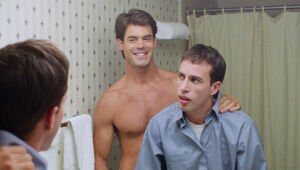
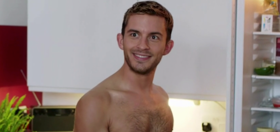



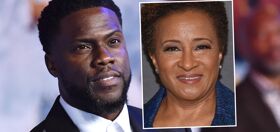



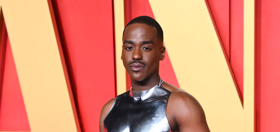


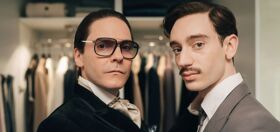


pete54
Andreja is almost a neighbour of mine. She is from the Melbourne suburb of Broadmeadows in the same municipal district as me.
It is wonderful to see where her career is going.
Kangol
I think Andreja is fabulous, and a stunner. I hope her glow up continues!
WillParkinson
What’s a ‘ridged’ role?
clhs
“Rising star”? I don’t think so. Check out her modelling work. She’s definitely already risen.
ShowMeGuy
She can’t do that ! ! ! ! ! ! !
The useless SJWs, the damn queer mafia, and the trans-terrorists have already creamed their shorts on this subject. An actor can only play a character which is exactly like themselves in real life.
Boycott. Fair is fair.